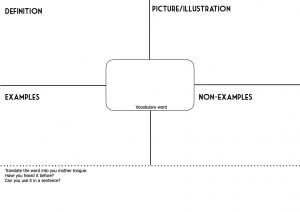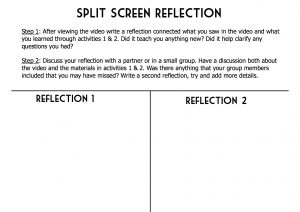The project I chose to customize was the one on Cellular Respiration. I would use this project to teach this concept to students in Grade 5. While the goal of WISE is to promote an atmosphere of inquiry, autonomy, and critical thinking, I found these project to be very text-heavy. My school has many EAL learners, and many would struggle to complete these tasks on their own without teacher guidance. Therefore, I added in activities at the beginning for students to complete that would give them a higher chance of succeeding on their own as they worked their way through the module. Also, I added in a reflection activity after the second activity for students to stop and reflect on their learning. Based on students reflections, teachers could either let them continue on their own, or intervene and go back and review information with small groups of students who need more support.
To start, I added in some ‘Tuning In’ activities to both activate students prior knowledge and to tune them into the topic. The first activity I added was a See/Think/Wonder. In this activity, the students will look at two macro images of plants and record what they ‘see’ in the pictures, what they ‘think’ about the pictures and any wonderings they might have. This is meant to both tune them into the topic as by starting a discussion, and the teacher can then formatively assess what language they are using and record questions they might have.

The next activity I added was a Key Word activity. In my class there are many EAL learners, so learning and reviewing any new vocabulary is essential to creating understanding before emerging into content. Here the students use the ‘Frayer Model’ to define and learn the new words, and then find out what the word translates to in their mother tongue.
Key Words:
Carbon Dioxide, Chloroplast, Glucose Photosynthesis

(still working on how I can add something like this to the WISE platform)
Both these activities are consistent with the SKI model as they will activate prior-knowledge and are a way of making students thinking visible. Furthermore, they are open-ended and inquiry in nature.
Finally, I added the video below explaining at the end of section 2 as a summary of the above materials. I added a split screen reflection for the students to fill out. The first side is for students to write what they learned from the video and how they can connect it to what they learned through the above materials. The second is the same reflection but done after discussion with others.
